Sarnath has a special place in my life beyond the tourism, beyond history and beyond the text-books. This is the place where I met Nidhi first time. It was a meeting arranged by the parents but still this place became special for me. So, whenever I go there and I go often, it reminded me that first meeting with Nidhi.
However, besides holding that special place in my life, it also has a great significance in the history of ancient India. This is the place, where Lord Buddha gave his first sermon to his five disciples after getting enlightenment in Bodh Gaya. This is the birthplace of Jain Tirthankar Lord Shreyans Nath. This is the excavation site of Ashoka Pillar, from which our national symbol has been adopted. It is so rich in history, places and temples that it is very difficult to explain all important places of Sarnath in a single post. Therefore, the journey to Sarnath will continue in two more posts, so that you can enjoy each and every moment there.
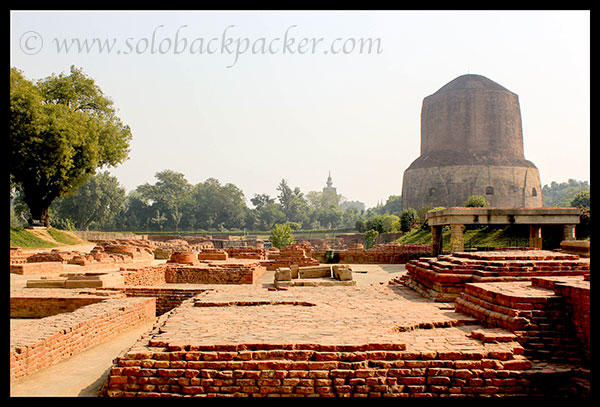
In first part, we will walk around the excavation sites mainly related to Ashoka The Great and Dhamekh Stupa. In second part, we will walk in the compound of famous Moolgandha Kuti Vihar Temple, First Sermon place of Lord Buddha and Small Bird Sanctuary of Sarnath. In the third and final part, we will roam around Sarnath to see some other temples related to Lord Buddha that includes Thai Temple, Vajra Vidya Institute and also the famous Chaukhandi Stupa.
Excavation Sites of Sarnath: The excavation sites of Sarnath have impressive collections of monasteries, stupas, temples, inscriptions, sculptures and other antiquities ranging in date from 3rd century B.C. to 12th century A.D. These sites are now maintained by Archaeological Survey of India. Everybody require to buy an entrance ticket in order to visit these sites.

Ticket Counter: Ticket counter is located on the main road near the main entrance on the left hand side. Entry ticket to Sarnath Museum is also available from here.
Entrance Fee: Citizens of India and visitors of SAARC (Bangladesh, Nepal, Bhutan, Sri Lanka, Pakistan, Maldives and Afghanistan) and BIMSTEC Countries (Bangladesh, Nepal, Bhutan, Sri Lanka, Thailand and Myanmar) : Rs. 5 per person.
Others: USD 2.00 or INR 100.00 per person
Note: Free entry is allowed to children up to 15 years.
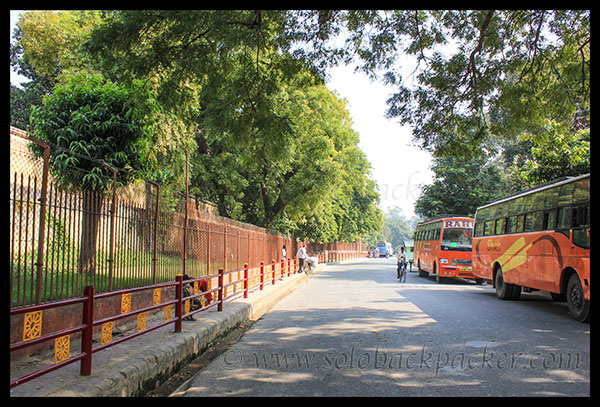
Entry and Dharmarajika Stupa: After entry through the main entrance walk along the well-maintained trail around the archaeological site. First major attraction of this trail is Dharmarajika Stupa. It is a large circular base made of bricks. This base has some layers of bricks and upper surface is completely flat. This circular base structure of the bricks are the only remnant of the glory of Dharmarajika Stupa. Ashoka The Great built thousands of stupa from the relics extracted from the seven main relics stupa. Dharamrajika Stupa is also a part of those thousand stupas built by Ashoka. This was a very small stupa originally, but later on other parts being added to its structure and it became a huge, grand structure of bricks. In order to built some temples from the material of these historical sites, this stupa was completely destroyed by the Diwan of Raja Chet Singh of Banaras. Today, it is only a flat circular structure of bricks.

Around this circular base large of a cluster of small votive stupas are still present.
Monolithic Railing: Moving further from Dharamrajika Stupa, there is a small enclosure containing the famous monolithic railing. This monolithic railing made of Chunar sandstone was discovered during excavation in 1904-05. Each side of this square railing measures 2.54m in length and 1.45m in height. It was probably originally placed at the top of the nearby Dharmarajika Stupa. It bears two inscriptions dating from about the 3rd century BC which refer to the teachers of the Sarvastivadin sect.
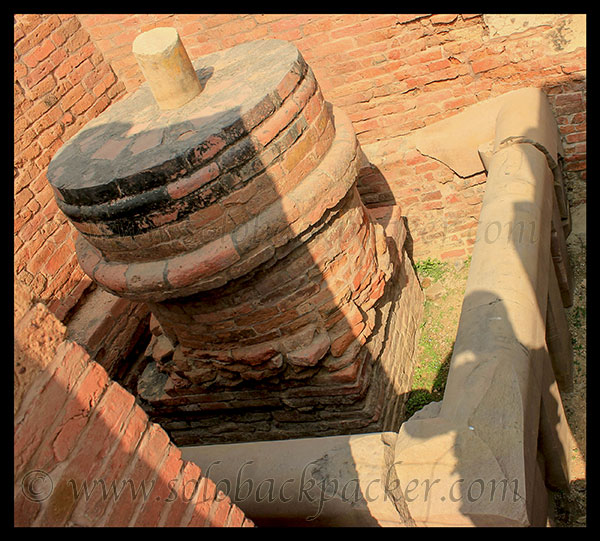
Ashoka Pillar: Few meters ahead of Monolithic Railing is the ruins of the Ashoka Pillar, the most celebrated among the many pillars built by Ashoka. Built in 250 BC, this pillar originally had a lion capital on its top where four lions seated back to back.Our national symbol has been adopted from this pillar only. The pillar is in broken state, but the four lion symbol is sill safe in the museum of Sarnath. This lion capital is still standing tall in the museum of Sarnath. The wheel from the base of this lion capital is now placed onto the center of National Flag of our country “Tiranga”. The four lions from the lion capital of Ashoka Pillar are the symbol of Power, Courage, Confidence and Pride.


Walk ahead from the pillar of Ashoka in the middle of impressive ruins all around, you will reach at the site of Moolgandha Kuti. This is the remnant of a huge temple probably represent the spots where Lord Buddha used to sit in Meditation. The roof has been collapsed and only the remains of thick walls supporting a lofty super structure is here. There is a sign-board clearly requesting the tourists not to stick the golden foils on the walls of these ruins, but nobody seems to care about that. Faith again overcome everything and the result, you can see lot of golden foils on the walls, not only destroying its beauty, but also its life.

In the area around the Moolgandha Kuti, there are many ruins of small stupas, Buddha Vihars and a small temple. These small stupas are known as votive stupas. These are basically built o commemorate visits of various acknowledged Buddhist masters or dignitaries.



Moving further from these cluster of ruins, you reach to the most famous site of Sarnath, Dhamekh Stupa.

Dhamekh Stupa: The earlier site of this stupa was believed to be built by Ashoka in 249 BC, but that was replaced during the Gupta Dynasty in 500 CE to built the present stupa. In its present shape this stupa is a solid cylinder of bricks and stone reaching a height of 43.6 mtrs. The wall of the stupa is covered with exquisitely carved figures of humans and birds, as well as inscriptions in the Brahmi script.
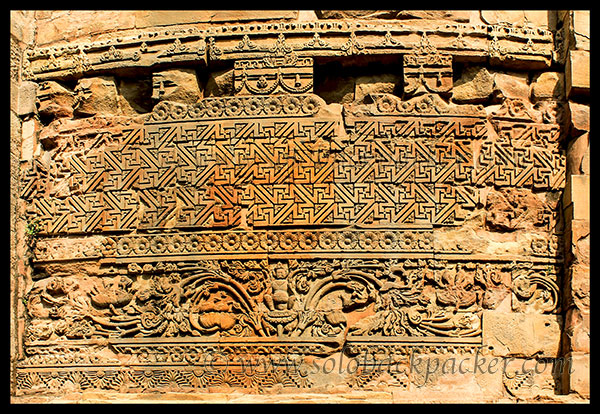
Many people lit mud lamps near the base of stupa to pay their homage to Lord Buddha. This is a auspicious site for Buddhist Tourist, who circle the stupa and chant the verses of Buddhism.
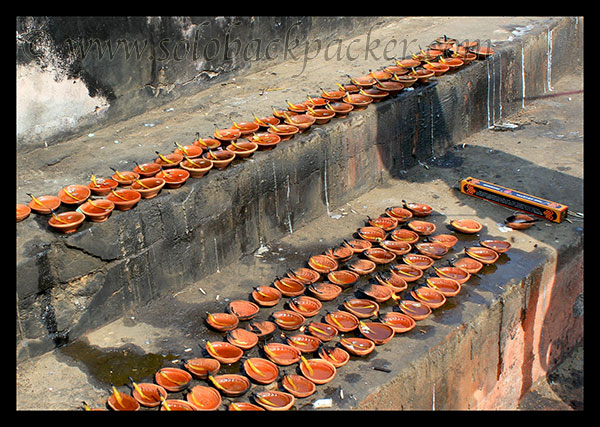
In a side of Dhamekh stupa, there is gate connecting this to another site of Sarnath, Moolgandha Kuti Vihar Complex, but this gate generally remains closed. You have to walk out again towards the main gate to come out from these sites to explore other attractions of Sarnath.




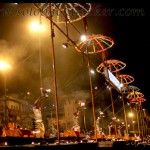
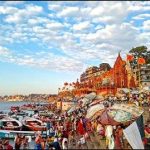
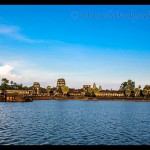
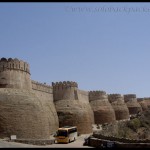

Very informative description. Haven’t been to this part of the country. Look forward to visiting someday soon.